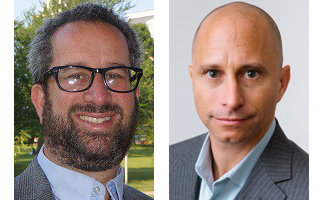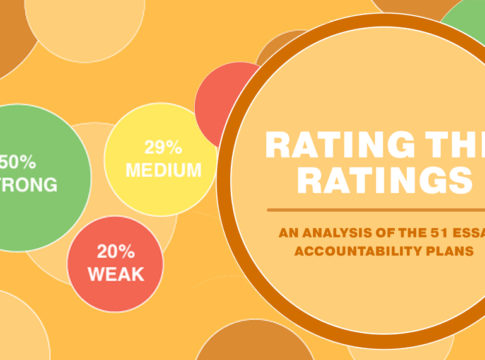As a general rule, when scholars call your work “garbage” and “nonsensical,” either you’ve struck a nerve or made a horrible blunder. When it comes to a Vox attack on our recent National Review Online article, “America’s Unexceptional Poverty Rate,” we think it’s more the former than the latter.
Nonetheless, we appreciate the critique from Vox’s Dylan Matthews, as it raises important and reasonable questions, both about our methodology and about the larger social policies issues at stake.
Let’s tackle the methods first. What we attempted to do in our Education Next article, “America’s Mediocre Test Scores,” and in an excerpt on NRO, was to question the conventional wisdom that the United States has an unusually large proportion of its citizens, and its children, living in poverty, as compared with other industrialized nations. For analysts of education policy, this is a matter of great concern, because many defenders of the American school system argue that our international test scores look bad only because our large number of poor children are “dragging down” our scores. (Poor children tend to lag academically everywhere.) We wanted to know whether that was true. For reasons we explained in our articles, we wanted to look at “absolute” child poverty rates. In particular, we wondered how many children in other countries were living below the U.S. poverty line, once foreign-currency exchanges and social-welfare payments are taken into account.
As it turns out, these are very hard calculations to make. The most recent publicly available results that use both 100 percent and 125 percent of the U.S. poverty line, to our knowledge, come from scholar Timothy Smeeding, the founder of the Luxembourg Income Study (LIS), using 2000 data.

Click to enlarge
Not satisfied with such old data, we asked Smeeding for more recent data (from 2010) and attempted to compute newer absolute poverty rates ourselves. (Smeeding graciously obliged, even though he no longer leads the LIS, and the data weren’t his. We don’t know why, in speaking to Vox’s Dylan Matthews, he denied that he provided us with these data.) However, because we didn’t have access to the underlying microdata, we had to make some “guesstimates,” in Matthews’s words, to get to our results. We regret not making that clearer to our readers.
But here’s the thing: Our results looked strikingly similar to what Smeeding found using old data at the 125 percent level:

The same patterns still hold: The United Kingdom has the largest proportion of poor children, by far, followed by the United States, with a higher child poverty rate (but not much higher) than Germany’s and Finland’s. We feel confident that if we were able to access the international microdata for 2010, our results would look quite similar to the numbers we published. (In fact, we would love for Matthews to ask Smeeding or one of his colleagues to do that exact analysis at the 125 percent poverty level.)
Yet on Vox, Matthews appears to throw cold water on that argument:
If you use the granular microdata and follow the same procedures in looking at the US as in looking at other countries, you can come up with a fair comparison and avoid the errors that plagued the Petrilli-Wright analysis. Stockholm University’s Markus Jäntti, a senior scholar with the Luxembourg Income Study, did just that kind of number crunching for me. Using the same poverty line as Petrilli and Wright, he found that the absolute poverty rate in the US in 2010 was about 10 percent, and in Finland it was about 4.5 percent. Finland’s rate wasn’t slightly lower — it was more than halved compared with the US.
So why the difference? It all depends on your cut-off for poverty. Go back to Smeeding’s 2000 numbers, and you can see why this matters.

It’s true that, whether you use the 100 percent or 125 percent level, the United States had more children in poverty than Finland did. But at 100 percent, our child poverty rate was almost three times as high as Finland’s (12.4 percent versus 4.6 percent). At the 125 percent level, it was only 12 percent higher (19.5 percent versus 17.4 percent).
We would love to see more data on absolute poverty rates, and we’d be glad to leave that work to anti-poverty scholars. But there’s a problem. As Matthews wrote, those scholars aren’t eager to provide them. They prefer to define poverty relatively, to argue that someone is poor if they make less than half of the median income of their own country:
That’s because poverty, in developed nations, is an essentially comparative notion. In rich countries it doesn’t make much sense to define poverty as “not having enough to meet basic material needs.” Almost no one is that poor in America — not even those earning less than $2 a day. What rich countries mean by poverty is something more like “having enough to have the bare minimum life necessary to be a part of your society.”
Read that again: Almost no one is that poor in America. Surely that’s not something you hear every day on the campaign trail from Sanders and other Democrats. And it’s not the impression you get from most anti-poverty scholars, who seem intent on cherry-picking the data, cut-offs points, and poverty rates to paint America in as Dickensian a light as possible. To crib from Daniel Patrick Moynihan, it’s as if they want to define deviancy up.
To Smeeding’s credit, he’s at least acknowledged in the past that the United States is not a social-welfare laggard when you take into account education spending and our employer-provided benefits. The lesson is clear: America’s efforts to combat poverty look very different in international comparison depending on what you count and how you measure.
So here’s a proposal for a compromise: Let’s publish, and use, both relative and absolute poverty rates. And when using those relative rates, let’s make sure we use our language carefully. If Senator Sanders and others continue to say that America has the “the highest rate of childhood poverty of any major country on Earth” — as Sanders did yet again in the Democrats’ debate Saturday night in Iowa — they should expect to take flak.
Meanwhile, let’s continue to do all we can to help low-income kids escape the grip of poverty, first and foremost by providing them with excellent schools. There’s little doubt that low-income children — here and around the world — face difficult circumstances and long odds at making it to the middle class. Addressing that challenge is something upon which we can all agree. It doesn’t help to make excuses for our lackluster education system by pointing to dubious poverty arguments that don’t stand up to scrutiny.
—Michael J. Petrilli and Brandon L. Wright
This post originally appeared on NationalReview.com





